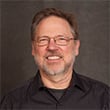- Level Foundation
- Course by Georgetown University
- Total students 3,268 enrolled
-
Offered by

About
In this course, we will look at how multiple, varying factors can account for language-learning patterns. Age, for example, is a key factor that predicts fluency. Another topic of particular importance to signed languages is the mind. Knowing that spoken language primarily activates the left hemisphere, in this course we will explore how signed languages also primarily activate the left hemisphere.
What you will learn
- Distinguish between continuous variation and discrete componentiality in sign innovation
- Define the term "linguistic typology"
- Describe the potential reasons for typological differences within ASL morphology according to observational and neuro-linguistic research on the morphological continuum.
- Stages and milestones in natural sign language acquisition
- Compare sign language pedagogies for L1 and L2 learning
- Identify the characteristic features of grammar that occur in both home sign and mature community sign languages
Skills you learn
Auto Summary
"Sign Language Science: Factors Contributing to Natural Learning" is an enlightening course designed to deepen your understanding of the elements that influence the acquisition of signed languages. Curated by the experts at edX, this foundational course falls within the Arts & Humanities domain and caters to individuals eager to explore the nuances of sign language learning. Throughout this course, learners will engage with comprehensive content that delves into various factors impacting the natural learning process of signed languages. Although the course duration isn't specified, the structure is flexible, allowing you to progress at your own pace. To accommodate different learning needs, the course offers two subscription options: Professional and Starter. This makes it accessible whether you're seeking to advance your professional skills or simply beginning your journey into the world of sign language. Ideal for anyone interested in linguistics, education, or enhancing communication skills within the deaf and hard-of-hearing community, this course serves as a valuable resource for both personal and professional growth. Join now to enrich your understanding and contribute to a more inclusive world.

Ted Supalla


